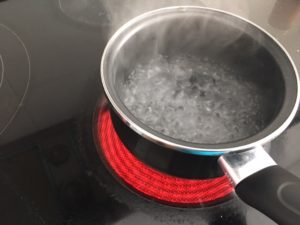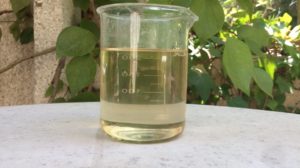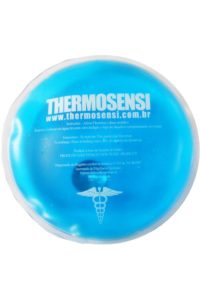| Theme | Crystallisation |
| Category | Chemistry Experiments, Experiments for children |
| Main product | Sodium acetate trihydrate |
| Short description | In this new experiment we are going to make instant hot ice. In this reaction that you are going to see, a liquid is instantly transformed into a solid state, in a reaction that also forms crystals in a very attractive way. This reaction is also exothermic, which means that it gives off heat, and as it does so immediately, it is used in blankets and heat packs. This reaction is also reversible, which means that once it has occurred, if you reheat the solution you can do it again. Watch this video to see how to do this experiment and see below the materials and the complete process used. |
PROCESS EXPERIMENT MAKING HOT ICE
In this experiment it has been used:
- Sodium Acetate Trihydrate -> You can find it at Alquera. It is the salt of acetic acid. It is a non-toxic product (it is a food additive for preservation).
- Water
- Glass tumbler.
MAKING HOT ICE STEP BY STEP
The process for the hot ice experiment is very simple:
STEP 1. Put the 100 grams of sodium acetate and 25 ml of water in a saucepan and heat. As it is trihydrate, sodium acetate contains water and when heated it will liquefy. Do not bring it to the boil, but heat it until it is still hot.
ally liquid.

STEP 2. Once all the sodium acetate has dissolved, transfer the solution to the glass beaker and let it cool down to about 40º (a little more than room temperature, you can also wait for it to cool down to room temperature).

STEP 3. We introduce a pointed element, it can be a finger, a glass rod, a screwdriver. If you dip it in a few flecks of sodium acetate beforehand, the better. You will see how the solid structure forms instantly and gives off heat instantly.
TECHNICAL EXPLANATION EXPERIMENT
Let's look at the theoretical explanation of what happens in this reaction. This reaction is based on the melting point of sodium acetate. This point is 54º. That is, at 54º or lower, sodium acetate is solid. However, when you heat it and cool it slowly, it remains in its liquid form and it only takes a small perturbation for it to instantly become a solid.
Moreover, this reaction is exothermic and gives off heat immediately, which gives it the application of heat packs that you can find commercially. In the following section we tell you what happened in this reaction.

